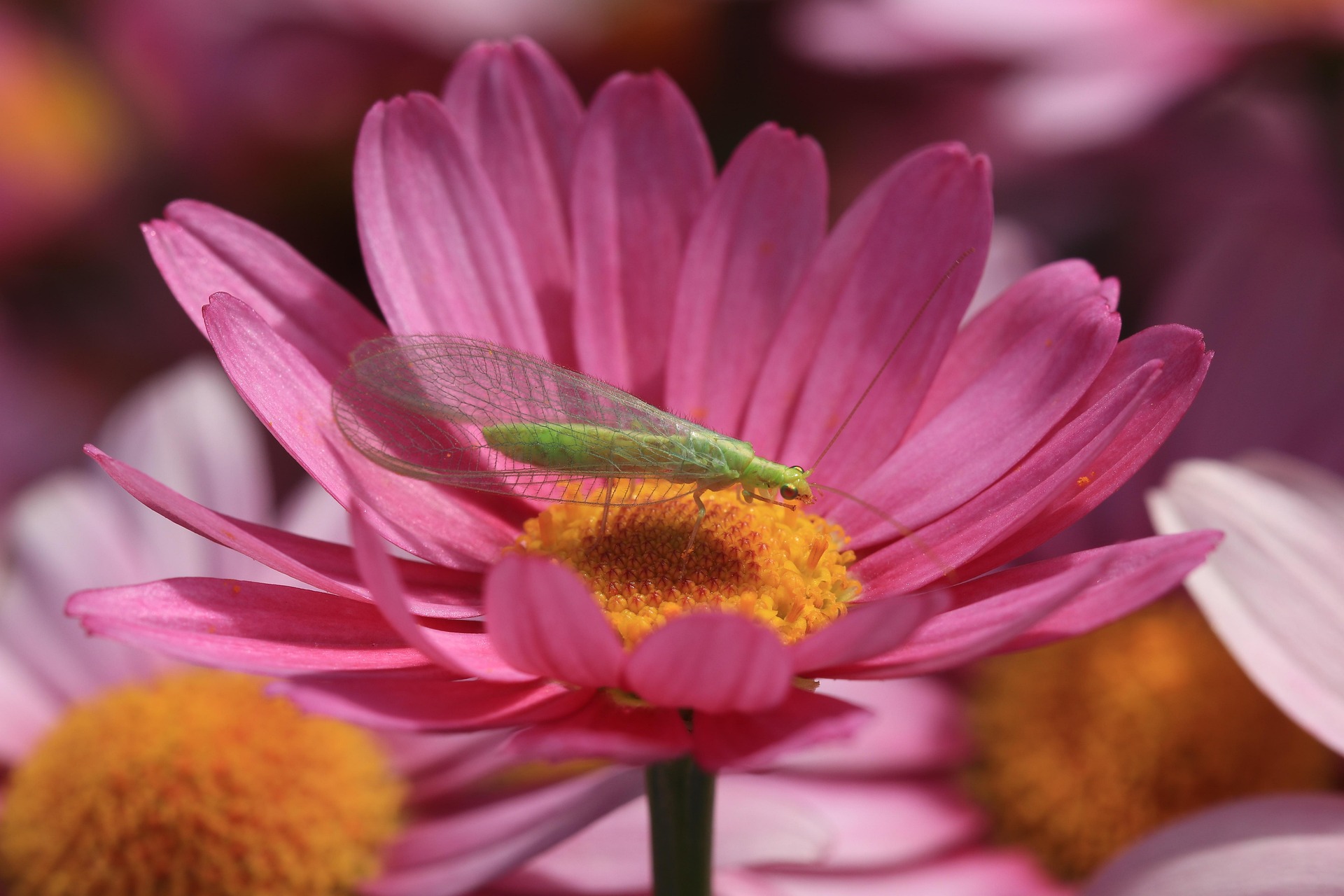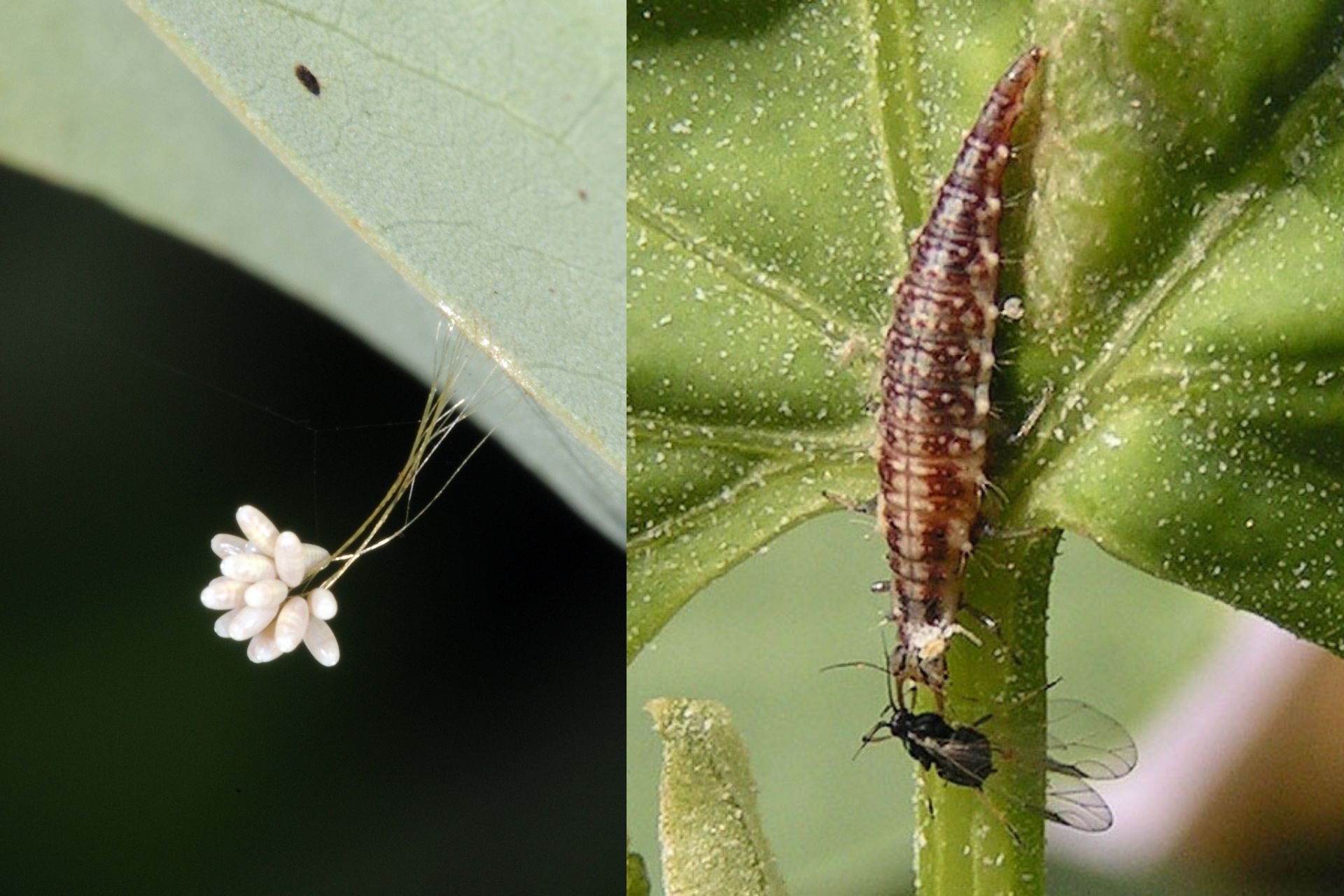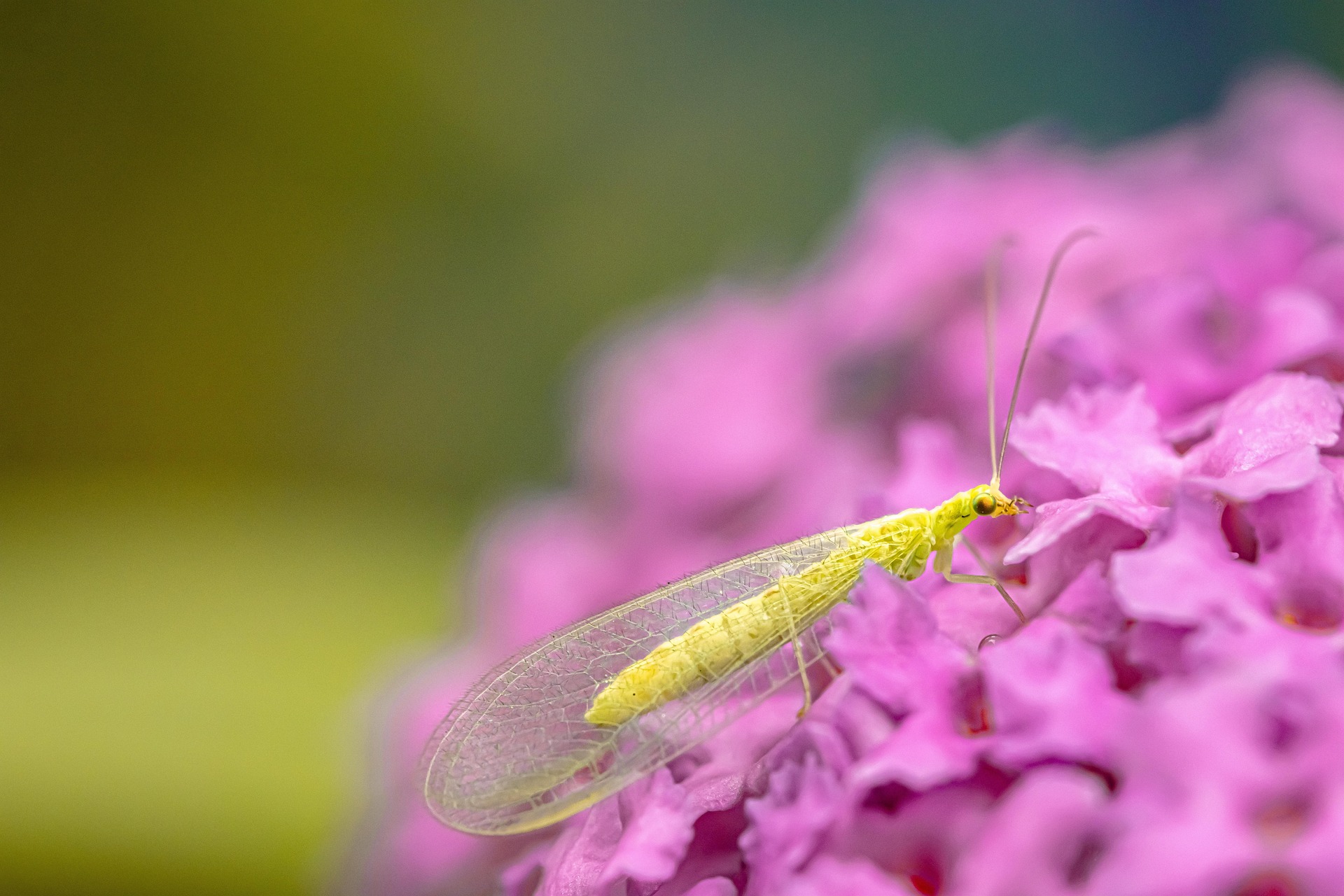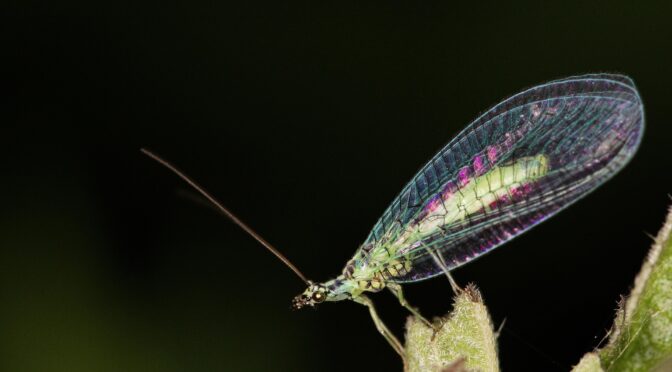Lacewings are one of our favorite beneficial insects to find in the garden! Their shimmery wings and slender body make them look a bit like mini nocturnal dragonflies. While they don’t get the credit that lady beetles, bees, and butterflies often receive, these delicate insects are among the gardener’s best helpmates.
Why are Lacewings Good for the Garden?
Lacewing larvae, or the immature stage of lacewings, are voracious predators. They feed on a wide range of garden pests including aphids, mealybugs, some scales, lace bugs, asparagus beetle larvae, Colorado potato beetle larvae, and caterpillar eggs and larvae including corn earworms, cabbage loopers, and cabbage worms.
Lady beetles usually take the spotlight for killing aphids, but lacewings are actually more effective. These talented predators feed on a wider range of insects. According to some sources, lacewing larvae can eat about ten times the number of insects as lady beetles. A single lacewing larvae can eat about 200 aphids in one week.
Lacewings also make sustainable pest control because they stay in areas that they find suitable habitat and food. We’ll cover how to attract them below.
What Lacewings Will I Find?
There are over 4,000 species of lacewing worldwide, with 85 to 90 of these species being native to the United States! The most common species to see in the Southeastern United States where we grow, are from a large family called the green lacewings (Chrysopa spp.).
However, it’s also possible to find other species like the brown lacewing (Hemerobius costalis). Thankfully, all the species of lacewing are easy to recognize as lacewings and beneficial for the garden.

Lacewing Larva Eating Aphid Right (Eric Steinert, CC BY-SA 3.0 <http://creativecommons.org/licenses/by-sa/3.0/>, via Wikimedia Commons)
How to Identify Lacewings
As adults, lacewings are nocturnal and you may find them on your window screens of around outdoor lights. They have long, slender, soft bodies that are usually green or brown. Their name is fitting and their shiny, translucent wings are netted with veins. They also feature long, slender antennae and may have gold, coppery. or dark eyes.
Their eggs are small, about 1mm in length and typically white. They lay their eggs atop thin, hair-like filaments.
The eggs hatch into the larval stage. In this stage, the lacewings lack wings and have a flattened alligator-like body with distinct legs. Some species collect organic debris on their hairs to deter predators.
Before maturing into adults, the larvae pupate in silk cocoons on the underside of leaves and stems.

Four Ways to Attract Lacewings to Your Garden
Lacewings are beautiful to see and helpful for controlling pests. Creating a suitable habitat for them in all their different life stages is essential to encouraging them to live in your garden.
Plant Pollen-Rich Flowers
Adult lacewings make the switch to a vegetarian diet, feasting on pollen and nectar. While they may not be helpful as predators in this stage, offering them plenty of food usually means that they’ll stick around to lay some eggs, providing your with another generation of lacewings.
They prefer small flowers that are rich in pollen and nectar like goldenrod, Queen Anne’s lace, Dara, dill, cosmos, coreopsis, caraway, tansy, Angelica, alyssum, and fennel.
Lacewings have multiple generations per year that need to feed on pollen and nectar to reproduce. Having flowers blooming throughout the season is key. Planning successions and opting for long blooming flowers can make a big difference. 
Provide Shelter
Depending on the species, lacewings overwinter in protected spots as adults or larvae. Shrubs, hedges, and dense foliage near your garden can provide suitable shelter. Adults may also choose to hunker down in dead plant material and leafy debris, so waiting until it’s warm in spring to do your garden clean up can also help keep them safe.
Reduce Chemicals in Your Area
Pesticide applications will kill lacewings and other beneficial insects. Avoid using pesticides, especially broad-spectrum on your property. Where possible, encourage your neighbors to do the same.
Note that pesticides may also come in on flowers and nursery plants. When possible buy local, ask about treatments, or grow your own starts at home.
Allow Some Early Aphids
This may seem like a silly idea, but an early population of pests like aphids can help ensure lacewings find your garden in the spring. If you have some early aphids, wait a bit to remove them if possible.
Purchasing Lacewings
While most people choose to attract native lacewings, some farmers and gardeners order them. Several green lacewing species like Chrysoperla rufilabris are now available online as a biological control for farms and orchards.
Lacewings are an excellent part of the organic gardener’s integrated pest management plan. Attracting and encouraging local lacewing populations is a great way to keep several annoying garden pests in check without resorting to pesticides.

